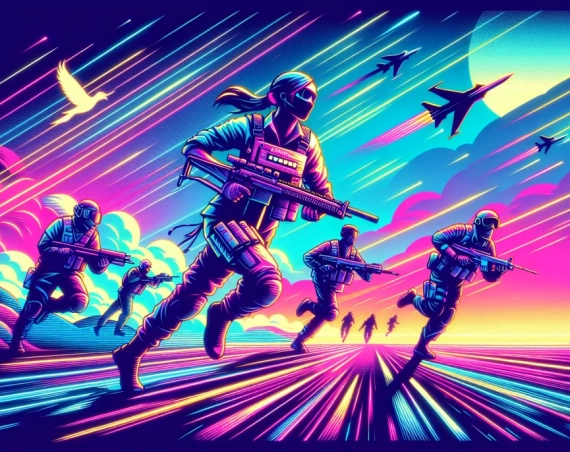
Why I Prefer Hollow Knight Over Silksong After 100% Completion
After dedicating over 46 hours to complete Hollow Knight: Silksong with 100% completion, including defeating the final boss multiple times, I’ve formed a clearer perspective on the game. While Team Cherry’s latest Metroidvania delivers exceptional content and quality, I find myself still favoring the original Hollow Knight, which I completed at 112%, including DLC, just before starting Silksong.
First Impressions and The Challenge of Sequels
It’s no surprise that sequels face the daunting task of meeting or exceeding the standards set by their predecessors. Six years of anticipation for Silksong created high expectations that reality sometimes struggles to meet. Despite many areas where Silksong shines — from its immersive environments to inventive boss designs — there are recurring issues that remind me why I preferred the first game.
Balancing More Is Harder
Silksong introduces more content, with 13 aspects I enjoyed compared to Hollow Knight’s 10, but also two notable drawbacks. It’s common for ambitious projects to face development challenges, especially when expanding a beloved formula. The increased enemy variety and new mechanics bring freshness, but also some design choices that clash with smooth gameplay.
Gameplay Mechanics: Shell Shard System and Combat Styles
- Shell Shard Resource Management: The red tools’ shell shard system can become a grind during boss fights, as resources drain with each death. While rosary beads can replenish shards, heavy grinding disrupts pacing — reminiscent of the debated blood vial system in Bloodborne (FromSoftware, 2015), where resource management sometimes frustrated players compared to the more straightforward Estus Flask system.
- Limited Liking of Crests: Silksong offers seven playstyles known as Crests, altering tool slots and needle attacks. Interestingly, I found myself favoring the Wanderer Crest, which aligns closely with the original Knight’s combat style. Although the added variety is commendable, the specialized needle attacks feel less enjoyable to me than the baseline combat of Hollow Knight. However, Hornet’s platforming abilities, such as sprinting, leaping, and umbrella gliding, significantly enhance gameplay fluidity.
Enemy Collision and Combat Frustrations
Team Cherry accelerated the pace in Silksong to match Hornet’s agility, but fast gameplay exposed collision detection flaws much more than in Hollow Knight. Players experience frequent hits not from boss attacks but from unintended collisions, sometimes even while bosses are stunned or off-screen. This negatively impacts player experience by increasing perceived unfairness.
Additionally, many enemy attacks deal only 2 damage, diminishing the sense of danger and progression. In the original Hollow Knight, a two-damage blow often signified a significant threat, like elite bosses. But Silksong equalizes damage, leaving players with a flat five-hit health system from start to finish.
Impact of Increased Speed
Raising the game’s speed by 50% offers thrilling moments of dueling bosses, but also overloads visual clarity and input responsiveness. I often struggled to distinguish between background elements and attacks, impacting reaction time. This contrasts with the more deliberate pacing of Hollow Knight, which balanced challenge and fairness effectively, as exemplified by player success in Pantheon 4 boss challenges.
Quest Design and Map Exploration
- Repetitive and Outdated Quests: Some quests in Silksong felt like outdated fetch quests, lacking innovation since the early 2010s in game design. While they add world-building, they occasionally impair engagement through unnecessary backtracking.
- Mapping Challenges: Silksong’s expansive and varied map proved less intuitive than its predecessor’s, making 100% completion more taxing. Missing objectives required exhaustive exploration or external guides, which contrasts with the first game’s clear quest markers and player-friendly navigation.
Enemy Encounter Design
Many flying enemies are intentionally frustrating, especially in “monster zoo” combat rooms where waves of enemies precede boss fights. This design, similar to unskippable cutscenes, disrupts flow and reduces enjoyment, impacting players’ overall engagement with combat sequences.
Conclusion: A Near-Miss Masterpiece
Despite its flaws, Hollow Knight: Silksong remains one of the standout Metroidvania games of recent years. Its ambitious scope, atmospheric world, and refined platforming make it a title worthy of acclaim. Yet, my personal preference leans slightly toward the original Hollow Knight due to smoother gameplay, tighter combat, and more satisfying progression.
This experience reflects broader challenges in game sequels, where expanding a beloved formula often introduces balancing issues. As the Metroidvania genre continues growing — a market projected to reach $2 billion by 2027 according to Newzoo — developers face heightened expectations to innovate without sacrificing quality (Newzoo, 2023).
Future updates and patches have the potential to address many of Silksong’s current shortcomings, possibly elevating it to the revered status of its predecessor. Meanwhile, both games exemplify Team Cherry’s creative passion and continue to inspire discussions on game design balance and player experience.
Key Takeaways
- Silksong offers more content but introduces some gameplay and design issues not present in Hollow Knight.
- Resource management and some combat styles in Silksong can cause frustration.
- Faster enemy movement and collision detection flaws reduce combat fairness.
- Map complexity and quest design in Silksong make 100% completion more challenging.
- Despite criticisms, Silksong is a significant and ambitious addition to the Metroidvania genre.
For Metroidvania Fans
Both Hollow Knight and Hollow Knight: Silksong contribute meaningfully to the Metroidvania legacy. Regardless of personal preference, they highlight the art and challenge of world-building, platforming, and combat design in modern indie games.
Sources:
- Newzoo. (2023). Global Games Market Report.
- FromSoftware. (2015). Bloodborne. Sony Computer Entertainment.
- Team Cherry. (2025). Hollow Knight: Silksong.
- Team Cherry. (2017). Hollow Knight.


